Gerard Dillon RHA RUA (1916-1971) Gable End Oil on board, 45 x 54.5cm (17� x 21�'') Signed, inscribed with title verso Exhibited as ''Garble End'', Mercury Gallery, 'Gerard Dillon' April 5th -April 29th 1967, Cat No. 20. James White wrote the foreword in the artist's exhibition in 1967 at the Mercury Gallery, ''Recently he [Gerard] has become preoccupied with clowns- pierrots in unlikely places which, one supposes, symbolize the artist on his quest for himself amongst his fantasies.'' The thirty-four works consisted of Pierrot figures in the artist's world of dreams depicting his desires and fears with symbols of Connemara reflecting memories of his time spent in the West and on Inishlackan Island. Often Dillon liked to evoke an immediate response from the viewer by employing vivid colour and disproportionateness. In 1965 following the death in quick succession of his three brothers, the figure of a Clown and later a Pierrot became a motif in the artist's work. Dillon's palette changed from 1967 from a lower range of earth tones to vivid colours possibly due to the artist's premonition that he would die like his brothers in his fifties. Influenced by Picasso's depiction of the masked figure, Dillon discovered that by adopting the masked Pierrot as his alter ego it enabled him to further express his 'counter ego' or 'shadow'. This interest in his subconscious relates to Carl Jung's dream theory. Van Gogh and Chagall's influence is evident in the artist's palette and pattern of stripes, which create a surreal world. In the foreground vertical broad stripes are interrupted by horizontal wave like lines that flatten out in darker waters. To the left a wispy cloud hovers over black land possibly symbolizing the artist's destiny. Leaning against a gable end of a cottage, the Pierrot appears unwilling to confront his 'shadow' opposite him. The 'shadow' is waiting on land close to a currach. In revealing his subconscious dream, his memory of life living on an Island with haystacks and a cottage reflect his vision of his afterlife. Concluding the foreword in the catalogue James White noted, ''When many popular styles will have been long since forgotten, this important and always vital artist will be one of the few major artists of our time left to be reckoned with.'' Karen Reihill Currently researching Gerard Dillon & Friends Gerard Dillon RHA RUA (1916-1971) Gable End Oil on board, 45 x 54.5cm (17� x 21�'') Signed, inscribed with title verso Exhibited as ''Garble End'', Mercury Gallery, 'Gerard Dillon' April 5th -April 29th 1967, Cat No. 20. James White wrote the foreword in the artist's exhibition in 1967 at the Mercury Gallery, ''Recently he [Gerard] has become preoccupied with clowns- pierrots in unlikely places which, one supposes, symbolize the artist on his quest for himself amongst his fantasies.'' The thirty-four works consisted of Pierrot figures in the artist's world of dreams depicting his desires and fears with symbols of Connemara reflecting memories of his time spent in the West and on Inishlackan Island. Often Dillon liked to evoke an immediate response from the viewer by employing vivid colour and disproportionateness. In 1965 following the death in quick succession of his three brothers, the figure of a Clown and later a Pierrot became a motif in the artist's work. Dillon's palette changed from 1967 from a lower range of earth tones to vivid colours possibly due to the artist's premonition that he would die like his brothers in his fifties. Influenced by Picasso's depiction of the masked figure, Dillon discovered that by adopting the masked Pierrot as his alter ego it enabled him to further express his 'counter ego' or 'shadow'. This interest in his subconscious relates to Carl Jung's dream theory. Van Gogh and Chagall's influence is evident in the artist's palette and pattern of stripes, which create a surreal world. In the foreground vertical broad stripes are interrupted by horizontal wave like lines that flatte
Gerard Dillon RHA RUA (1916-1971) Gable End Oil on board, 45 x 54.5cm (17� x 21�'') Signed, inscribed with title verso Exhibited as ''Garble End'', Mercury Gallery, 'Gerard Dillon' April 5th -April 29th 1967, Cat No. 20. James White wrote the foreword in the artist's exhibition in 1967 at the Mercury Gallery, ''Recently he [Gerard] has become preoccupied with clowns- pierrots in unlikely places which, one supposes, symbolize the artist on his quest for himself amongst his fantasies.'' The thirty-four works consisted of Pierrot figures in the artist's world of dreams depicting his desires and fears with symbols of Connemara reflecting memories of his time spent in the West and on Inishlackan Island. Often Dillon liked to evoke an immediate response from the viewer by employing vivid colour and disproportionateness. In 1965 following the death in quick succession of his three brothers, the figure of a Clown and later a Pierrot became a motif in the artist's work. Dillon's palette changed from 1967 from a lower range of earth tones to vivid colours possibly due to the artist's premonition that he would die like his brothers in his fifties. Influenced by Picasso's depiction of the masked figure, Dillon discovered that by adopting the masked Pierrot as his alter ego it enabled him to further express his 'counter ego' or 'shadow'. This interest in his subconscious relates to Carl Jung's dream theory. Van Gogh and Chagall's influence is evident in the artist's palette and pattern of stripes, which create a surreal world. In the foreground vertical broad stripes are interrupted by horizontal wave like lines that flatten out in darker waters. To the left a wispy cloud hovers over black land possibly symbolizing the artist's destiny. Leaning against a gable end of a cottage, the Pierrot appears unwilling to confront his 'shadow' opposite him. The 'shadow' is waiting on land close to a currach. In revealing his subconscious dream, his memory of life living on an Island with haystacks and a cottage reflect his vision of his afterlife. Concluding the foreword in the catalogue James White noted, ''When many popular styles will have been long since forgotten, this important and always vital artist will be one of the few major artists of our time left to be reckoned with.'' Karen Reihill Currently researching Gerard Dillon & Friends Gerard Dillon RHA RUA (1916-1971) Gable End Oil on board, 45 x 54.5cm (17� x 21�'') Signed, inscribed with title verso Exhibited as ''Garble End'', Mercury Gallery, 'Gerard Dillon' April 5th -April 29th 1967, Cat No. 20. James White wrote the foreword in the artist's exhibition in 1967 at the Mercury Gallery, ''Recently he [Gerard] has become preoccupied with clowns- pierrots in unlikely places which, one supposes, symbolize the artist on his quest for himself amongst his fantasies.'' The thirty-four works consisted of Pierrot figures in the artist's world of dreams depicting his desires and fears with symbols of Connemara reflecting memories of his time spent in the West and on Inishlackan Island. Often Dillon liked to evoke an immediate response from the viewer by employing vivid colour and disproportionateness. In 1965 following the death in quick succession of his three brothers, the figure of a Clown and later a Pierrot became a motif in the artist's work. Dillon's palette changed from 1967 from a lower range of earth tones to vivid colours possibly due to the artist's premonition that he would die like his brothers in his fifties. Influenced by Picasso's depiction of the masked figure, Dillon discovered that by adopting the masked Pierrot as his alter ego it enabled him to further express his 'counter ego' or 'shadow'. This interest in his subconscious relates to Carl Jung's dream theory. Van Gogh and Chagall's influence is evident in the artist's palette and pattern of stripes, which create a surreal world. In the foreground vertical broad stripes are interrupted by horizontal wave like lines that flatte
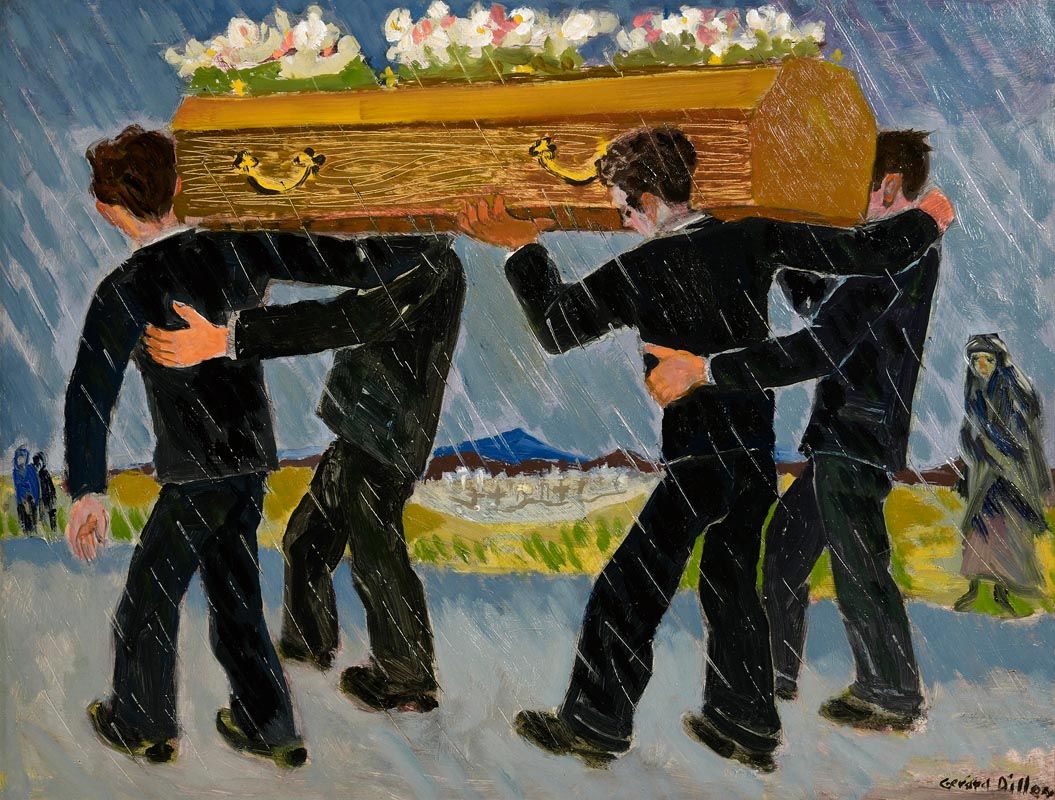
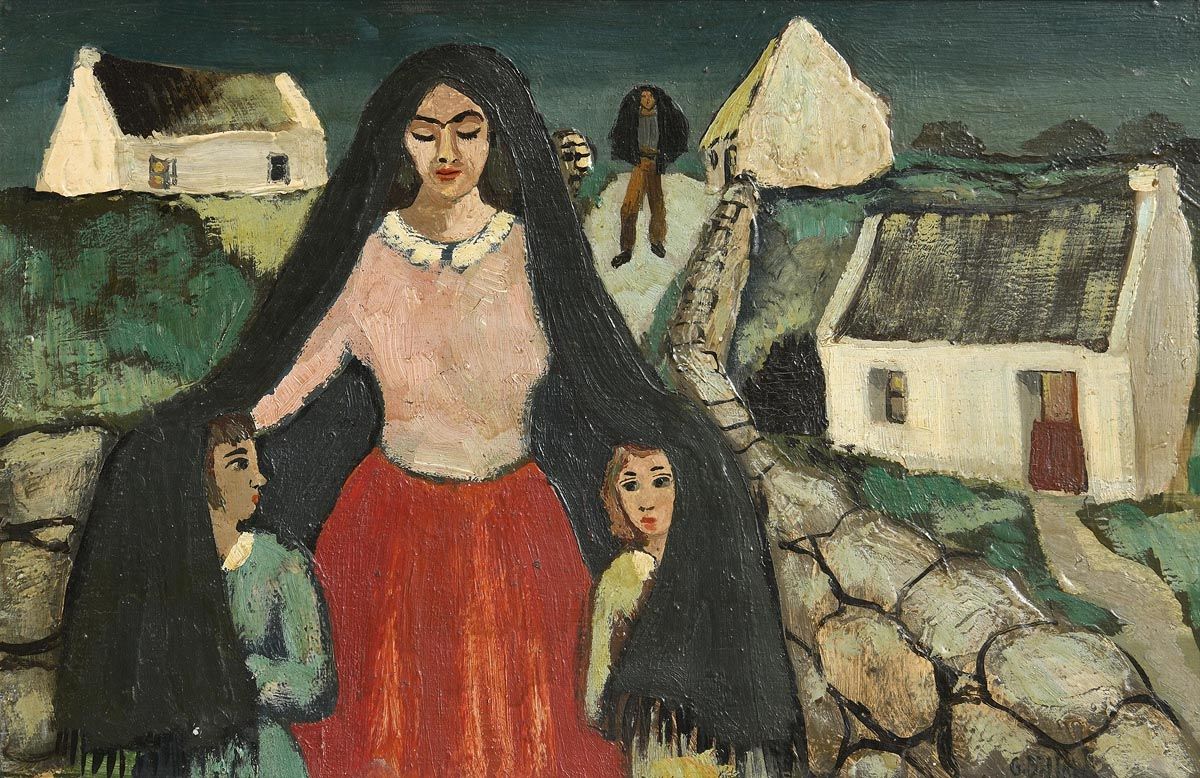
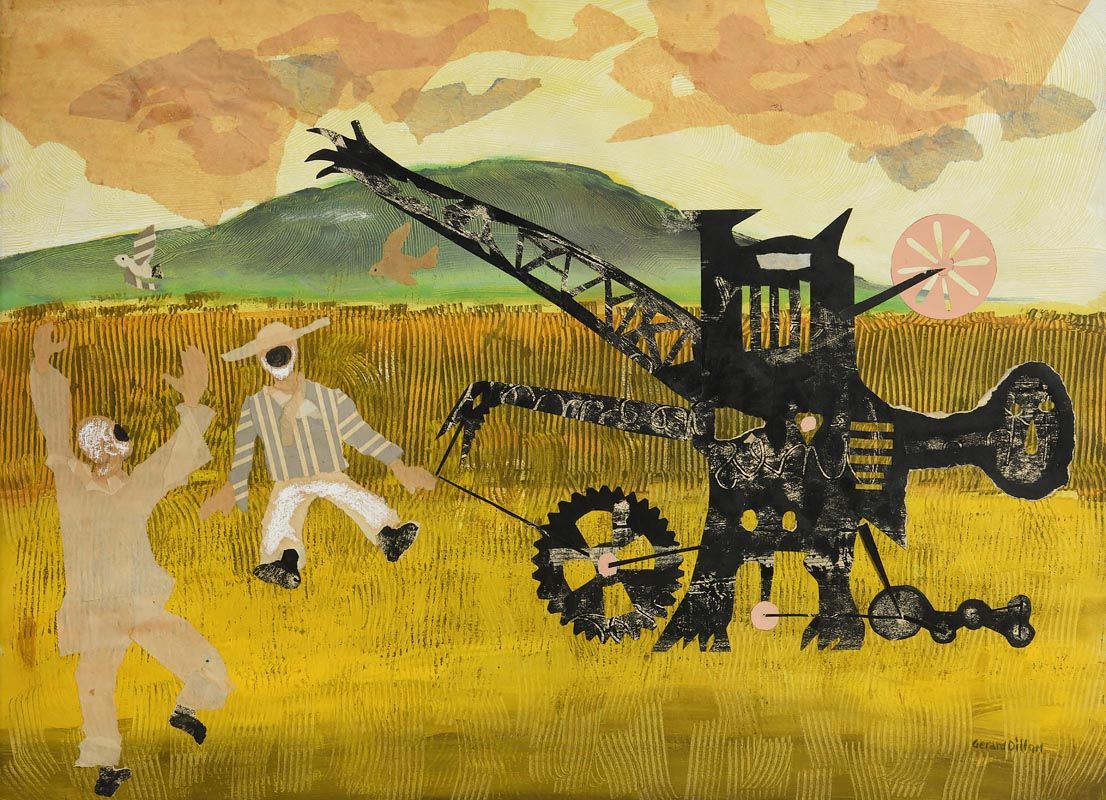
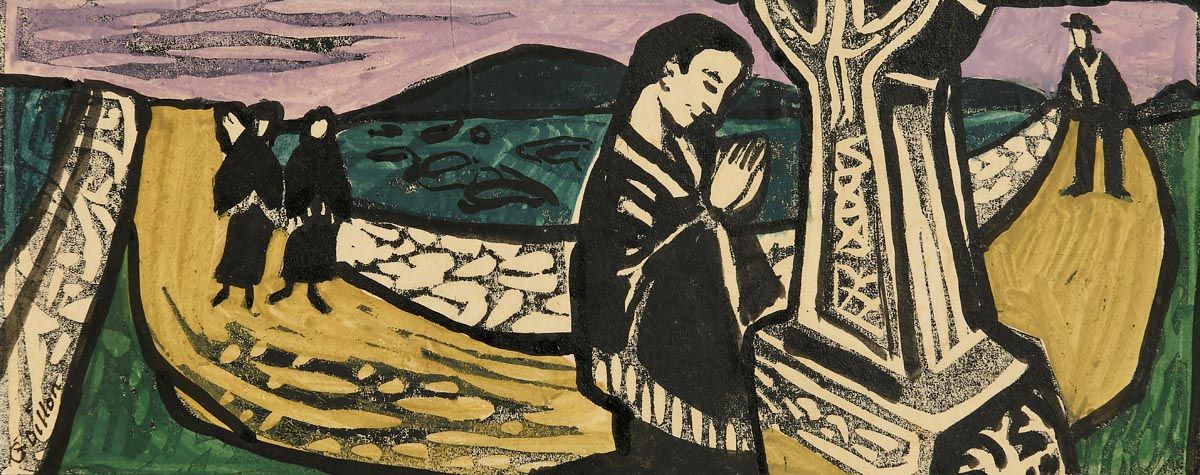
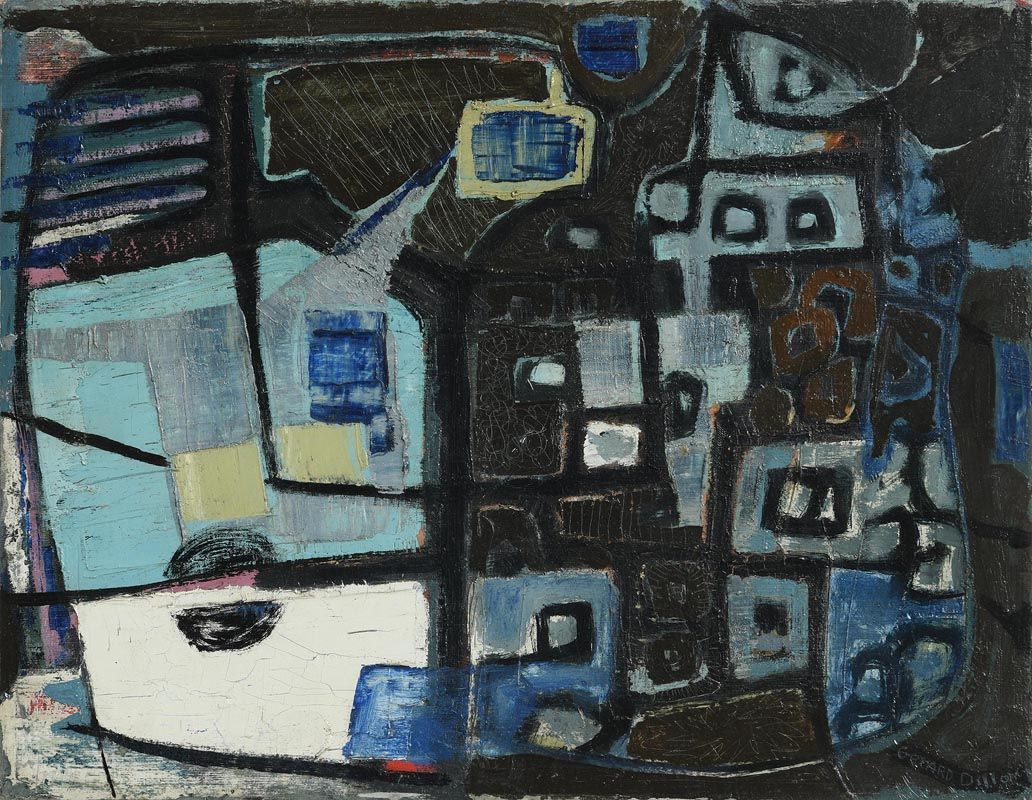
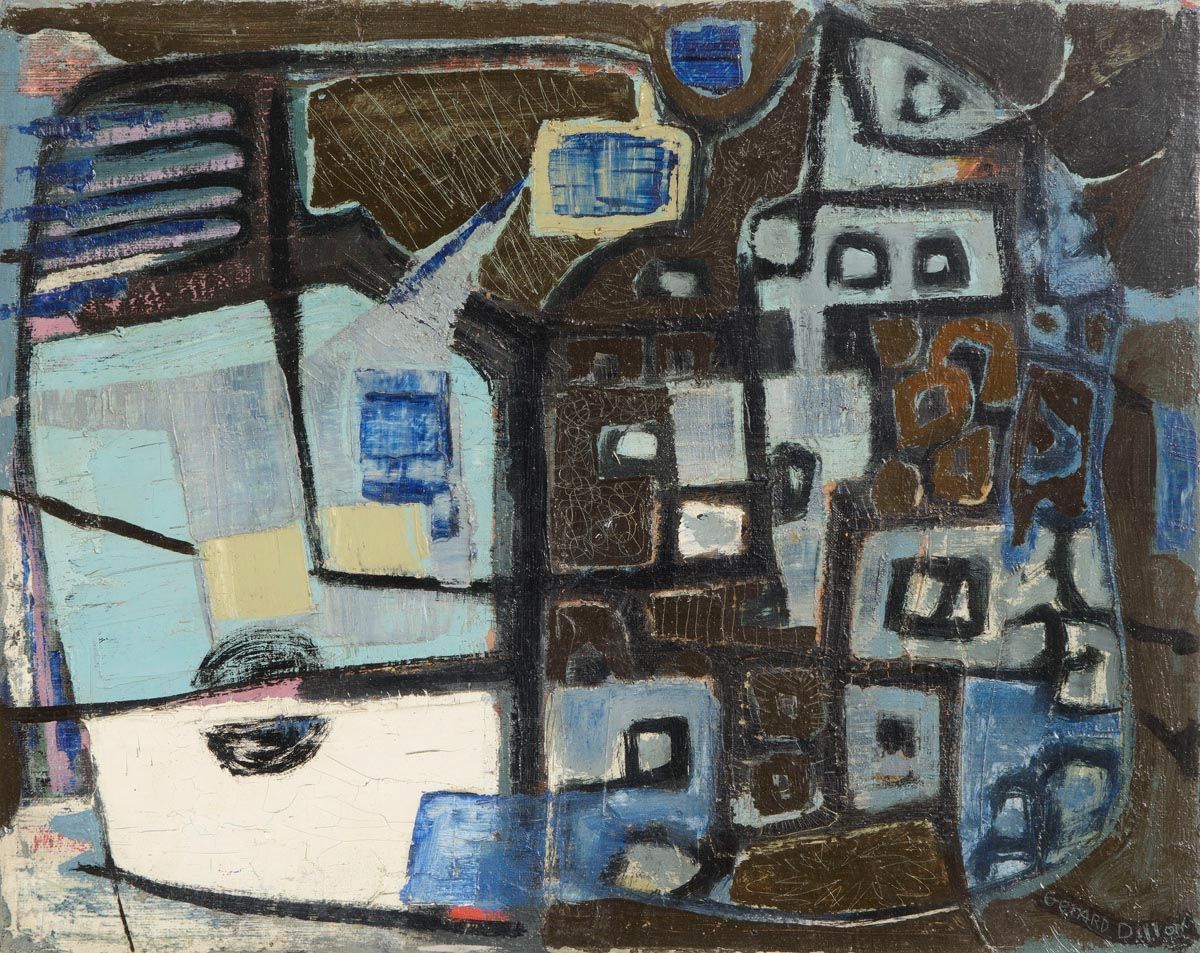
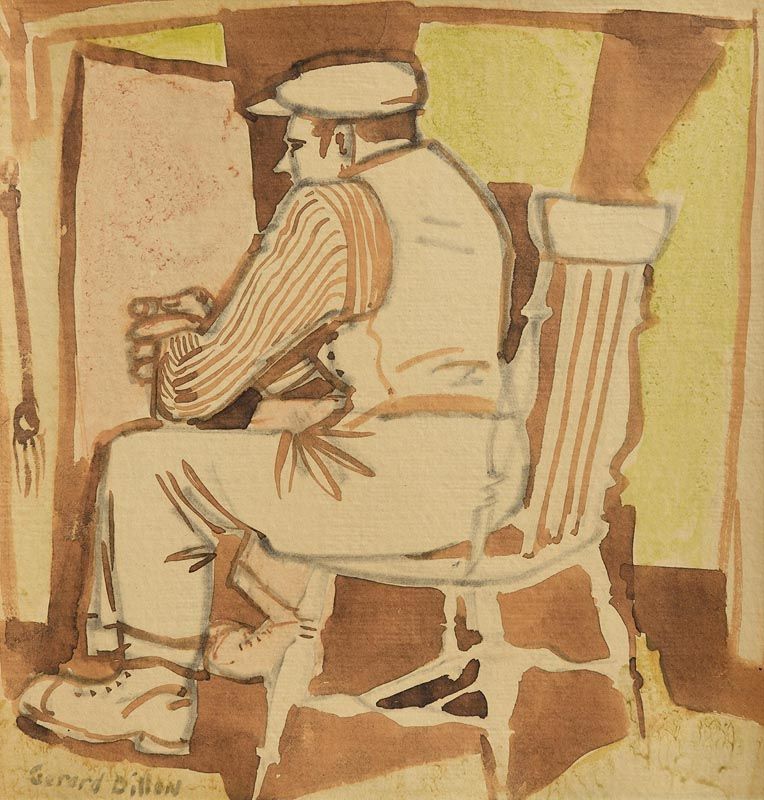
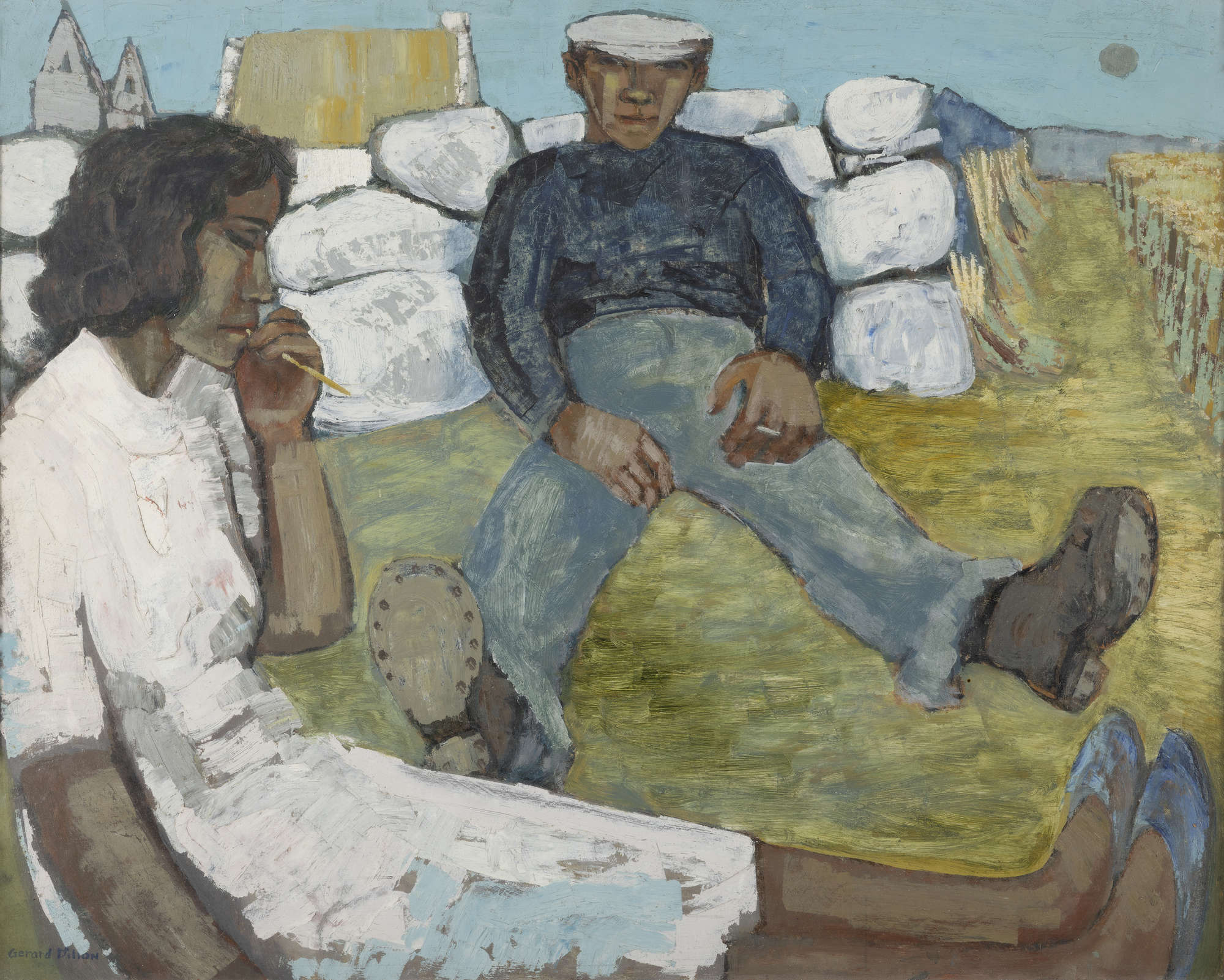
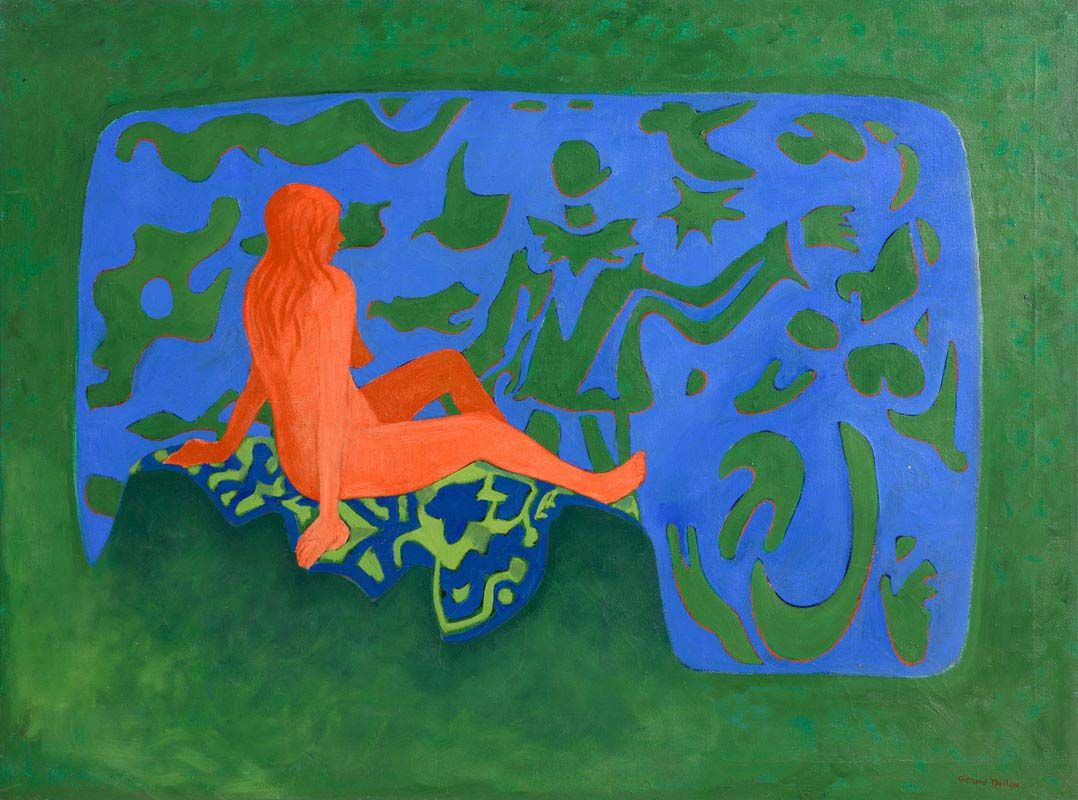
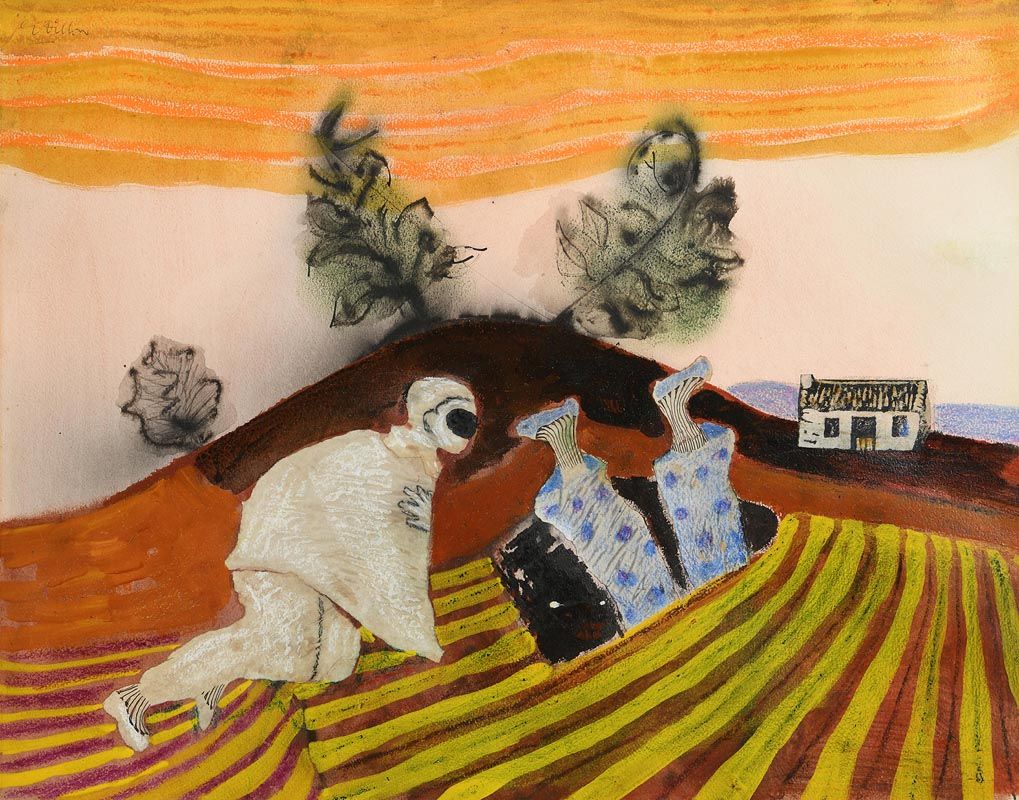

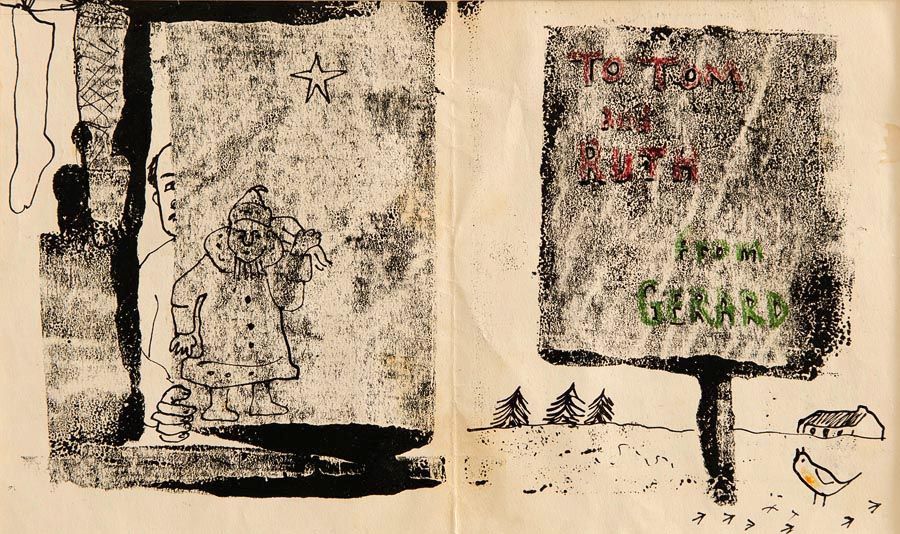
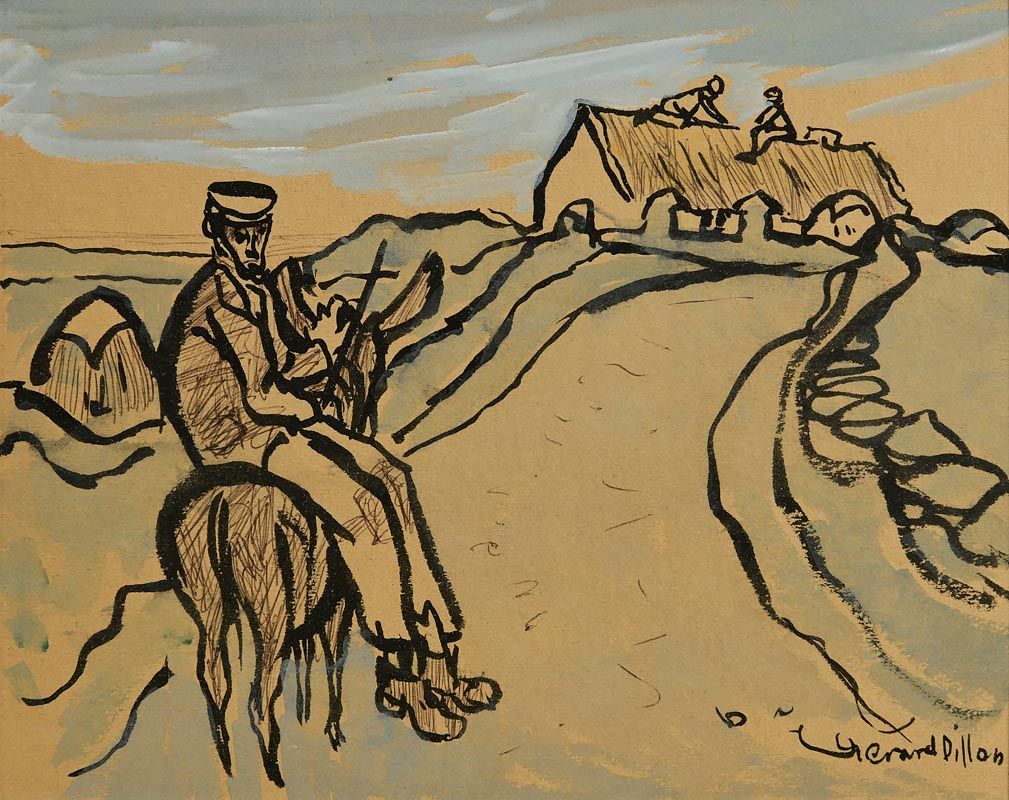
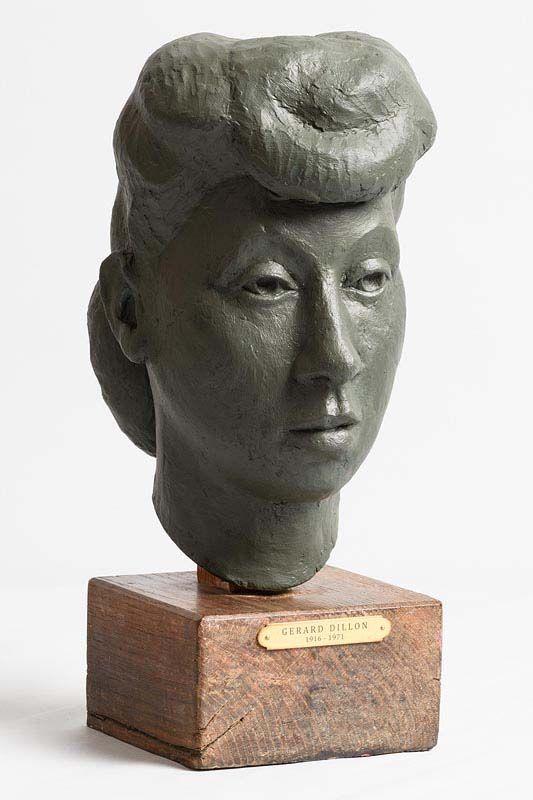
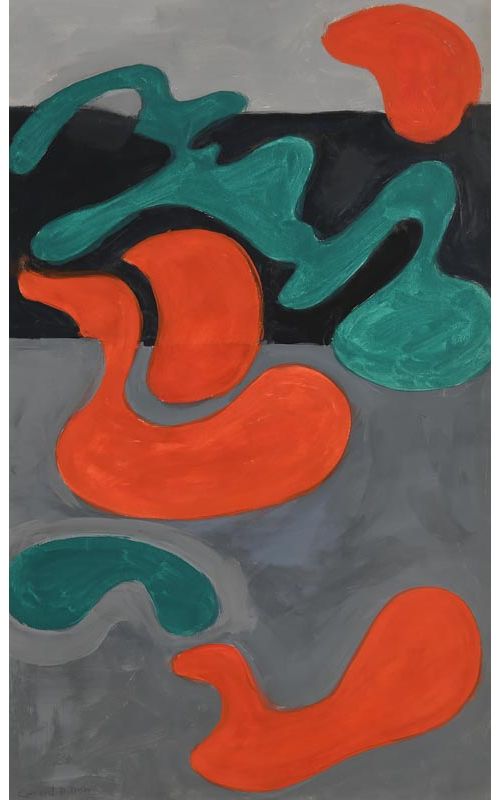
Testen Sie LotSearch und seine Premium-Features 7 Tage - ohne Kosten!
Lassen Sie sich automatisch über neue Objekte in kommenden Auktionen benachrichtigen.
Suchauftrag anlegen